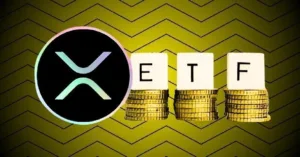Abnormal return refers to the unusual profits from certain assets or securities over a specific time period.
What Is an Abnormal Return?
Abnormal return refers to investment returns that are excessively high or low. In such instances, the performance of the investment or funds deviates from the normal and expected rate of return. The impacts of an abnormal return are temporary and may be the result of abnormal fundamentals or fraudulent activity on the part of the entity holding the money.
Abnormal return is distinct from Alpha and excess returns, which are attributable to the investment managers’ performance. On the other hand, Cumulative Abnormal Returns (CAR) is the sum of all abnormal returns and is used to monitor the effects of external threats on stock prices.
Importance of Abnormal Returns
Most importantly, an abnormal return is not the same as a negative return. It can be both positive and negative. The final number is a summary of the difference between actual and expected returns. Abnormal returns are a valuable evaluative metric for comparing returns to market performance.
Abnormal Return as an Evaluation Metric
With abnormal returns, you may determine a portfolio’s risk-adjusted performance relative to market norms and benchmark indexes. You can thus determine if your investments adequately pay you for the risk you are incurring. A positive or negative abnormal return is calculated by subtracting actual returns from anticipated returns.
If a mutual fund with an expected annual return of 12% achieves a return of 26%, this indicates an abnormal return of 14%. In contrast, if it truly provided a return of 3%, you will receive a negative 9% abnormal return.
What Is Capital Asset Pricing Model (CAPM)?
The Capital Asset Pricing Model (CAPM) calculates the expected rate of return for a certain portfolio or investment. It describes the association between risk and expected return. After determining expected income, abnormal income may be determined by subtracting the expected yield from realized return rate. Abnormal returns are based on the performance of securities or portfolios.
Cumulative Abnormal Return (CAR)
Cumulative Abnormal Return (CAR), as previously mentioned, refers to the aggregate of abnormal returns over a specific time period. It enables investors to evaluate the performance of an asset or security over a given length of time, particularly since abnormal returns during short time frames tend to be skewed.
Example of Abnormal Return
In certain instances, stock prices vary in response to the social media activity of a company’s team. Tesla’s stock (NASDAQ: TSLA) was banned from trading for a few days in 2018 after CEO, Elon Musk, tweeted about turning the firm private at $420 per share.
Additionally, financial disclosures cause abnormal returns. For instance, in early February 2020, Spotify’s (NASDAQ: SPOT) stock price declined following the revelation of a considerably larger-than-expected loss.



